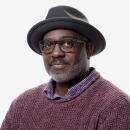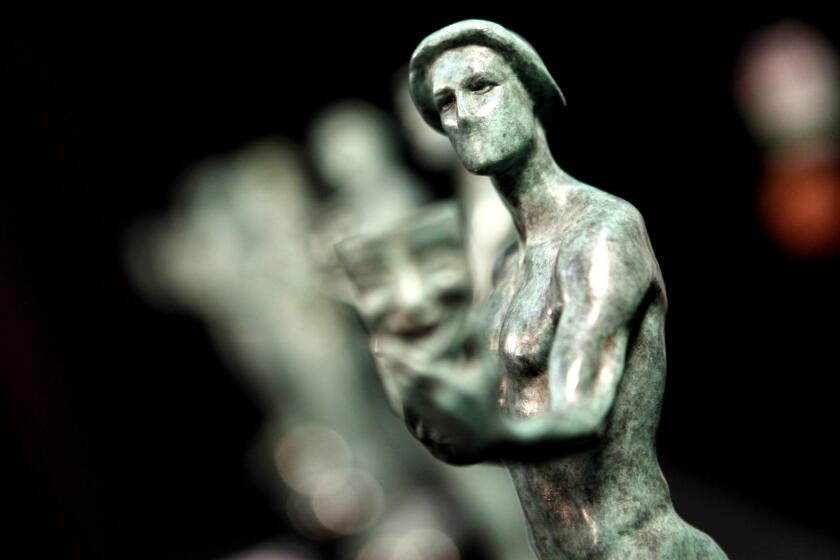Bruce Timm discusses the Batman he was never allowed to make ... until now
- Share via
Bruce Timm and his animation style have been a popular hit for the animated DC Universe since “Batman: The Animated Series” first hit the air. He followed it up with “Superman: The Animated Series” and a few other DC titles as well, but his latest anticipated project, “Justice League: Gods and Monsters Chronicles” changes everything for the classic DC characters. Including a whole lot of dark directions Timm wasn’t allowed to explore in the past.
In this alternate world, Batman is a bloodthirsty vampire, Superman is the son of General Zod, and Wonder Woman is a warring New God. Other twisted characters include a “bizarre” Green Lantern Corps and a maniacal Harley Quinn, complete with dead bodies and severed heads in her refrigerator. You can watch her evil machinations in the clip above.
The film comes out July 28 from Warner Home Entertainment, but the Web series -- a miniseries with just three episodes -- launches today online at Machinima. A second season has already been announced for 2016, but it will be a full season of episodes. We talked to Timm about the series, his style of animation and what went into the new world of variant characters.
Where did the idea for these versions of the Big Three come from?
Different places. I started with the Superman idea. Rather than creating the entire DC Universe from the group up, I wanted to tie it in to the existing “real” DC Universe, or the in-continuity DC Universe. I took the easy route and kept Superman coming from Krypton and I just had this flash of insight like “Oh, what if his dad wasn’t Jor-El? What if his dad was Zod?” And that sent us down an interesting path with him. And then, with Batman, I kind of always liked the idea of making Batman a vampire. We actually tried to do that in the animated series a long time ago, but weren’t allowed to do that for children’s television. So somehow we went to the whole Manbat thing and thought, “Oh. Kurt Langstrom. Kurt Langstrom is Batman.” And then Wonder Woman. We came up with a bunch of ideas. At one point, we were going to keep her identity close to the whole Greek mythology thing, and it wasn’t really working for us. It wasn’t a big enough change. Then, after talking it over with Alan Burnett, I had already drawn an image of her where she was wearing a sort of Kirby-esque basic battle armor, and Alan looked at that and said, “Whoa, wait a minute. Why don’t we just make her one of the New Gods.” And there you go.
For all of the other characters that we’re going to be introducing in the Web series, they were a little all over the place. Some of the characters weren’t really radically changed from their in-continuity counterparts. For instance, Harley Quinn shows up. She’s an extreme version of Harley, not really a different re-imagining of her. A pretty evil version. It’s just been a little bit of this, a little bit of that.
So, there’s no real need to reference Kal-El or Bruce Wayne or ...
Well, Kal-El here doesn’t exist. The only thing we know about Bruce Wayne ... as far as I’m concerned, Bruce Wayne’s parents didn’t get gunned down in Crime Alley, so he had a completely different life. We may deal with that at some point. If we do, then he’ll have a role that’s completely different than what you might expect.
Everyone loves your style of animation. Who were your influences?
Tons of different people. It’s a combination of classic Disney animation style. “Sleeping Beauty” was always my favorite in terms of pure design. It really kind of simplified that particular style. That plus a heaping dose of Alex Toth character design of Hanna-Barbera superheroes of the ‘60s. That’s the basic two main ingredients of my style. Then there’s a little bit of Jack Kirby, a little bit of John Buscema, Wally Wood and Harvey Kurtzman.
The son of Zod, the Superman in “Gods and Monsters,” asked the question about whether he should rule Earth or not. What philosophical debates were you having about the project?
Well, that’s Superman in a nutshell. This version especially, because he has a completely different origin than Kal-El. He has a different biological father -- this megalomaniacal supervillain. Also, he wasn’t raised in Kansas by the Kents. He was raised by an immigrant Mexican couple in the Southwest, so he has a completely different set of values than Clark Kent/Kal-El. It brings up the whole nature versus nurture argument. Is who we are hard-wired into our genes, and how much of it is our environment or upbringing? It just gave us an interesting space to explore with him.
What character tweaks are you most excited about?
It’s still in the early days. We’re still finalizing scripts for the second season. Some of the characters have been announced. Everything else I want to keep under wraps just to have some surprises. For the ones that have been announced ... we have a new Mary Marvel. She’s black and kind of looks like Pam Grier from the ‘70s. Cool way to go with her.
And we have a cyborg super soldier that is a mash-up of two different characters named Steel. A character in the ‘80s named Commander Steel who was a cyborg super soldier and the John Henry Irons version of Steel. And the other thing we announced was the Green Lanterns. We want to do a really bizarre version of the Green Lantern Corps focusing on the idea that they’re genuinely aliens. We want to explore some ideas that we haven’t before, like how alien can an alien be and still be understandable by humans. So we want to make sure that they don’t act like human beings, don’t think like human beings and don’t talk like human beings. They have different points of view on everything and they’re kind of scary.
In terms of the Web series, how has the distribution of this project changed the way that you now think of doing animated series?
The biggest change is also the biggest challenge. The episodes are going to be pretty short. The episodes are going to be about seven minutes long instead of 22. It’s made us rethink completely how to tell a story, and the second season does have a bit of a story arc, but at the same time they stand alone so that you don’t have to have seen all the others to follow it. It’s been a real challenge to cut to the chase. You want to give the audience enough information so that they can follow, but you don’t go too much into back stories and origin stories and such. It’s been a challenge, but to me it’s been really exciting. We just cut through all of the boring stuff and just get to the good part.
Follow me on Twitter: @Storiz
More to Read
The biggest entertainment stories
Get our big stories about Hollywood, film, television, music, arts, culture and more right in your inbox as soon as they publish.
You may occasionally receive promotional content from the Los Angeles Times.











